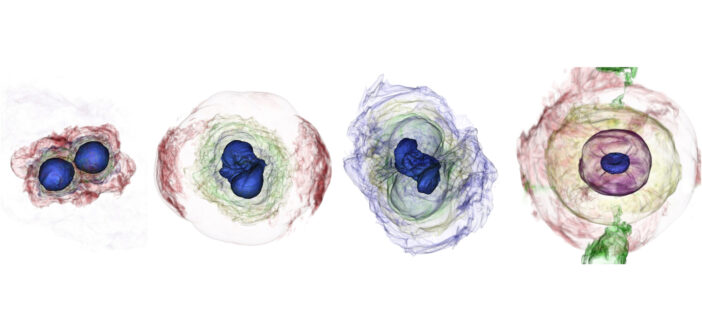When a massive star ends its life in a supernova explosion, it can leave behind a tiny, dense remnant called a neutron star. Sometimes, two neutron stars end up locked in a gravitational embrace, emitting gravitational waves as they dance toward each other over millions of years. When the pair finally meets, their collision lights up the electromagnetic spectrum and creates heavy elements like gold and platinum. In a recent research article, Luciano Combi (Argentine Institute of Radio Astronomy, Perimeter Institute for Theoretical Physics, and University of Guelph) and Daniel Siegel (Perimeter Institute for Theoretical Physics, University of Guelph, and University of Greifswald) simulated the nuclear reactions and electromagnetic radiation produced after the merger of a pair of neutron stars. The image above illustrates four stages of their simulation, from the moment before the neutron stars meet, when their mutual gravity stretches them into teardrop shapes, to the merger aftermath, when an accretion disk feeds the sole remaining star. To learn more about the simulations described above, be sure to check out the full article linked below!
Citation
“GRMHD Simulations of Neutron-star Mergers with Weak Interactions: r-process Nucleosynthesis and Electromagnetic Signatures of Dynamical Ejecta,” Luciano Combi and Daniel M. Siegel 2023 ApJ 944 28. doi:10.3847/1538-4357/acac29
